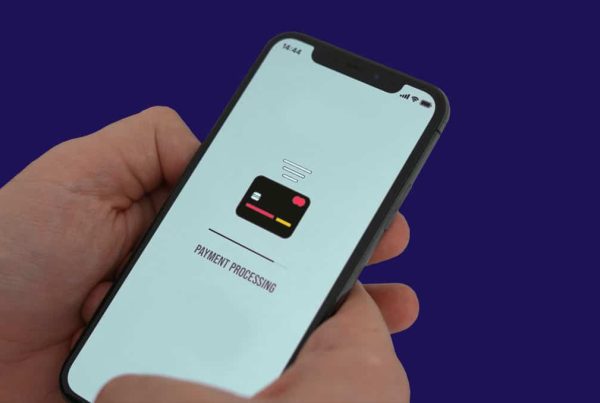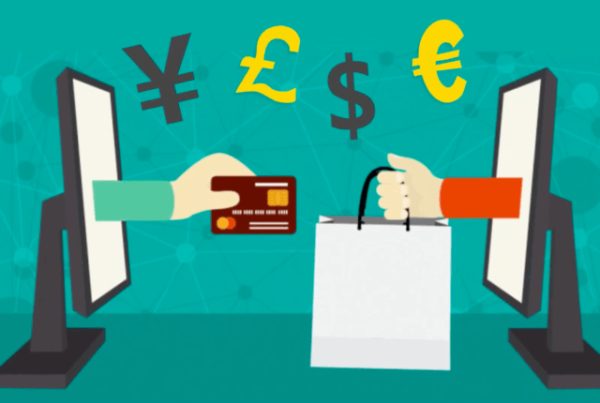EFT Payment Defined – What is an EFT Payment?
An Electronic Funds Transfer (EFT) is the electronic transfer of money from one account to another. The term EFT payment is rather broad and includes a variety of electronic payment types.
EFT Payments
Cash and personal checks are useful for local and personal transactions. But to meet the demands of the ecommerce market, merchants need a more efficient way to take payments.
Electronic payments are the answer, as they are faster and more convenient than physical payment methods and allow merchants to engage a much broader customer base.
This is why nearly all online merchants today utilize electronic payments, although there are still some niche businesses that prefer old-fashioned payment methods. For instance, some online merchants still require customers to mail in a check or money order.
» MORE: Ecommerce Basics: How to Accept Card Payments Online
What are the Different Types of EFT Payments?
There are several types of EFT payments. Let’s have a look at them.
- Direct deposit
- Direct debit
- ATM and debit card transactions
- Wire transfers
- Online banking payments
- Electronic checks
- Point-of-sale (POS) transactions
- Mobile banking transactions
- Peer-to-peer (P2P) transfers
- Automated Clearing House (ACH) transactions/Bankers’ Automated Clearing Services and Faster Payments
- Pre-authorized payments
- Stored-value cards and electronic gift cards
- Mobile wallet transactions
- International EFT transfers
- Bill presentment and payment (Bills are presented online to the customer, and the customer can pay them electronically.)
How Does EFT Work?
The mechanisms differ based on the specific type of EFT being used. However, a general overview of how EFT works is as follows:
1. Initiation – An EFT is initiated when someone decides to transfer money electronically.
2. Authorization – Before the transaction can proceed, it must be authorized. This might mean confirming the payment on a checkout page, inputting a PIN, or something else. For automated transactions like direct deposits, prior arrangements and permissions have to be made.
3. Encryption – The transaction details are encrypted.
4. Communication – The transaction details, depending on their nature, are routed either through Bacs (Bankers’ Automated Clearing Services) or Faster Payments. Bacs handles direct debits and some types of direct deposits, while Faster Payments allows for quick (usually instant) transfers between bank accounts. For card transactions, the details first go to a payment processor, which then communicates with the issuing bank to verify that funds are available.
5. Verification – The receiving entity verifies the transaction details. The goal of the verification process is, in part, to ensure compliance with AML and CFT regulations.
6. Transfer – Once verified, the funds are transferred from the sender’s account to the receiving account. Depending on the type of EFT, this can be instantaneous or might take a few days.
7. Settlement – After the transfer, the transaction is settled. This means funds are moved, and account balances are updated.
8. Notification – Depending on the system in place, both the sender and receiver might receive notifications about the transaction.
9. Record keeping – Both the sending and receiving institutions keep records of the transaction. This ensures there’s a trail for auditing, dispute resolution, and general review.
How Does EFT Banking Work in the UK?
The steps described above apply to banks in the UK, although variations might exist based on specific bank protocols, customer agreements, and regulatory requirements.
The UK’s financial system is regulated by the Financial Conduct Authority (FCA) and the Prudential Regulation Authority (PRA), which have specific regulations around electronic transfers, customer protection, and data security.
Are Electronic Fund Transfers Safe?
Electronic Fund Transfers (EFT) are generally considered safe. However, they are not entirely without risks.
Potential Concerns Associated with EFTs
Phishing scams: Cybercriminals often attempt to trick individuals into providing their banking details through fake websites or emails.
Social engineering: Beyond just phishing, attackers can use a combination of research and manipulation to trick bank representatives into initiating fraudulent transactions.
Data breaches: Even with robust security measures, financial institutions can experience data breaches that compromise customer information.
Over-reliance on technology: Systems can sometimes fail or experience outages, which can temporarily hamper access to funds or the ability to transfer money.
User error: Mistyping an account number or other details can lead to funds being sent to the wrong recipient.
Malware: If a user’s device is compromised with malware, cybercriminals can potentially capture login credentials and conduct unauthorized transactions.
Man-in-the-Middle attacks (MitM): These occur when an attacker intercepts and even alters the communication between two parties. This can lead to unauthorized diversions of funds during a transaction.
SIM swapping: In cases where two-factor authentication is linked to a phone number, cybercriminals may attempt to trick a telecom provider into switching the user’s phone number to a new SIM card. This allows the attacker to receive authentication codes and gain unauthorized access to the user’s account.
Lack of customer verification: Some systems might not require secondary verification for transactions, especially for smaller amounts. This can be exploited by fraudsters if they gain initial access.
Account takeover: This occurs when a cybercriminal takes control of a person’s account and makes unauthorized transactions.
Vendor or service provider risks: If a bank or financial institution outsources certain services or relies on third-party software, vulnerabilities in these external entities can pose indirect risks to EFT users.
Delayed detection: EFTs conducted during non-business hours or over weekends and holidays might not be scrutinized immediately by the bank’s fraud detection systems, giving fraudsters a longer window before potential detection.
Compromised personal devices: Even if the bank’s systems are secure, if a user’s personal computer or smartphone is compromised, it can be a gateway for unauthorized transactions.
Limitations in international transactions: When conducting EFTs across borders, there might be differences in regulatory protections, security standards, or fraud detection capabilities. This can make international transactions risky.
Enhanced Safety Features of EFTs
Encryption: Advanced encryption methods help secure data during transfer.
Authentication protocols: Multiple authentication layers, such as two-step verification, help ensure transaction legitimacy.
Regulation and oversight: Financial authorities, such as the Financial Conduct Authority (FCA) in the UK, regulate EFTs. They ensure that banks and payment systems adhere to strict security standards.
Automatic logging: Digital ledgers track and record every EFT, allowing for a transparent transaction history that can be reviewed as needed.
Fraud monitoring and detection: Sophisticated algorithms and AI-driven systems monitor transaction patterns to flag and sometimes halt suspicious activities.
Secure Socket Layer (SSL) technology: This is commonly used by banks to establish a secure and encrypted link between a web server and a browser.
Tokenization: This replaces a customer’s sensitive payment data with a more secure token.
Secure hardware: The physical infrastructure used by financial institutions is often fortified against both digital and physical intrusions.
Security certifications: Reputable financial institutions often undergo third-party security assessments to maintain excellent security standards.
» MORE: Payment security for merchants
What are the Benefits of EFT Payments?
EFT payments are popular for a reason, as they offer several benefits, which include:
- Speed
- Cost-efficiency
- Convenience
- Improved cash flow management
- Global reach
- Enhanced security
- Reduced clutter
- Efficient reconciliation
- Timely payments
- Transparent tracking
- Improved customer experience
- Reduced dependency on physical infrastructure
- Instant notifications
» MORE: Streamline Transactions with Easy Online Payment Solutions
How Long Does It Take an EFT to Process?
Direct deposits and direct debits via Bacs – Up to 3 business days
Faster Payments Service – Instant to 2 hours
ATM and debit card transactions – Within 1 to 2 business days
Wire transfers – 1 to 5 business days
Online bill payments – 1 to 3 business days
E-wallet or mobile transactions – 1 to 3 business days
International EFTs – 1 to 5 business days
» MORE: Making Online Payments Faster and Easier with Click to Pay
More About International EFT Payments
International payments from the UK to destinations outside the EU are facilitated primarily through the SWIFT network.
For intra-European transactions, UK residents use SEPA, even though the UK is no longer part of the European Union.
Curiously, the UK is still a member of SEPA and continues to participate in SEPA transactions as a non-EU country. This allows UK-based banks and financial institutions to process euro payments seamlessly across European countries.
However, the terms of the UK’s participation could be subject to change based on future negotiations and agreements between the UK and the EU.
Pixxles stays up-to-date on the latest changes to keep you informed.
The Pros of International EFT Payments
Speed: Faster than traditional methods, especially with services like SEPA and SWIFT.
Convenience: Can be initiated from the comfort of one’s home or office.
Traceability: Transactions are trackable, providing an audit trail.
Security: Established systems have high security and encryption standards.
Automation: Recurring payments can be set up easily.
Accessibility: Allows for transactions between countries where traditional methods might not be feasible.
The Cons of International EFT Payments
Costs: They can be expensive due to foreign exchange rates and service fees.
Time variability: Some transactions, especially if routed through intermediary banks, can take several business days.
Complexity: Different countries have diverse banking standards and practices, which can complicate payments. Moreover, certain countries have restrictions on international money transfers.
Currency fluctuation: Exchange rates can change rapidly, affecting the amount the recipient gets.
Fraud risks: Though generally secure, the global nature of EFTs can expose users to international fraud schemes.
Potential for errors: Mistakes in details can lead to misrouted payments.
Reach Out to Pixxles
Pixxles is an FCA-authorised payment provider that is directly accountable to our customers and to the Regulator.
Visit our Contact page to speak with us.








